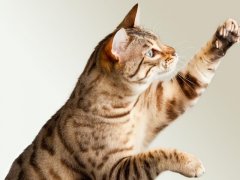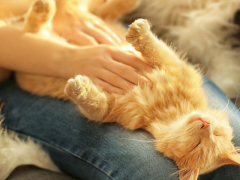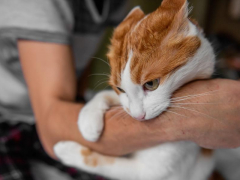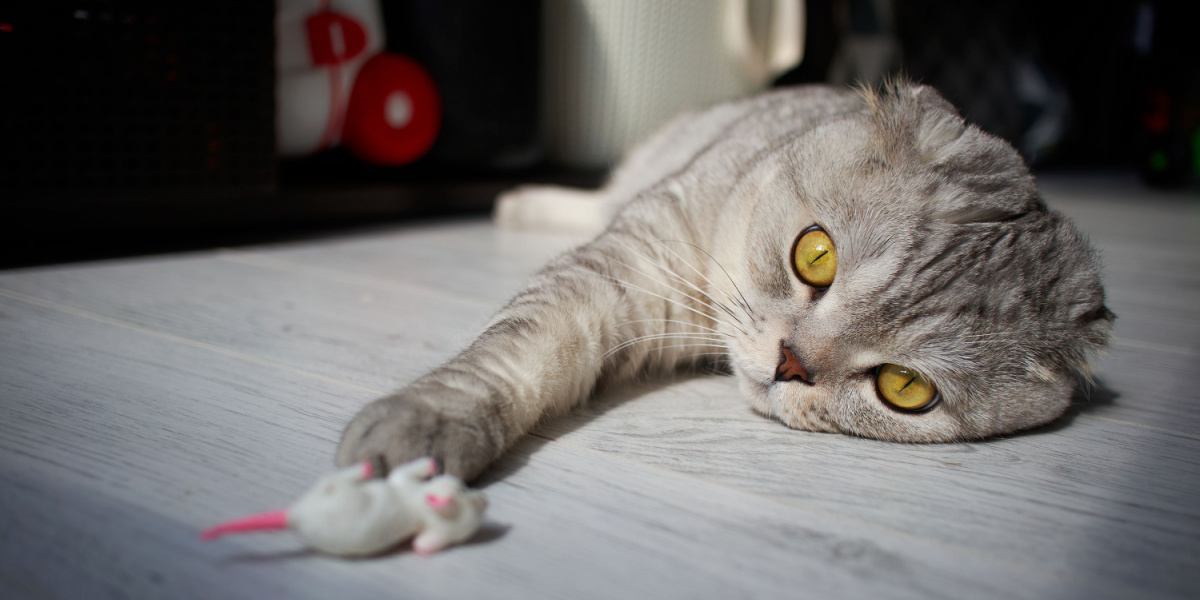
Cats use their paws for so many things, including movement, grooming, playing, hunting, and sometimes feeding. We all know that humans are either lefties, righties, or for those lucky few, ambidextrous, but do the same rules apply to cats? As a pet owner, you might not have given it much thought, so let’s take a closer look.
Also Read: 10 Interesting Facts About Cat Paws You May Not Have Known
Are Cats Left or Right Handed?
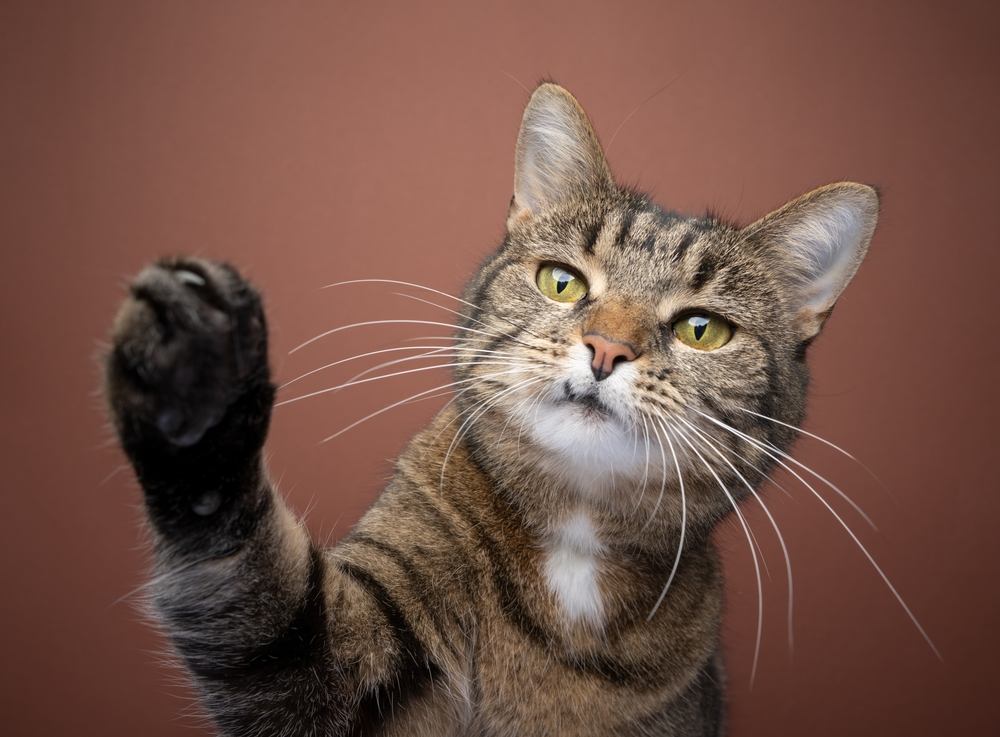
Cats and many other animal species do in fact show a preference for using one front paw more than the other.
A dominant paw refers to the paw your cat subconsciously chooses to use preferentially over all others. Cats will most frequently use either their left or right front paw to begin the grooming process, to first bat at a toy, or reach under the couch to fish out a treat. They won’t necessarily use their dominant paw first every time, but the majority of the time they will preferentially use either their left or right paw.
The technical term for using one side of the body preferentially is called lateralization, or lateralized motor behavior. It used to be thought that it was only humans that have a dominant side of their body and are either lefties or righties.
However, more recent evidence has shown that this trait extends to nearly all vertebrate species, including cats, dogs, dolphins, birds, and even fish. Cats also demonstrate other lateralized behaviors, including head turns and ear turns, preferentially turning either to the left or to the right.
Also Read: Do Cats Have Scent Glands In Their Paws?
A Study to Investigate the Dominant Paws in Cats
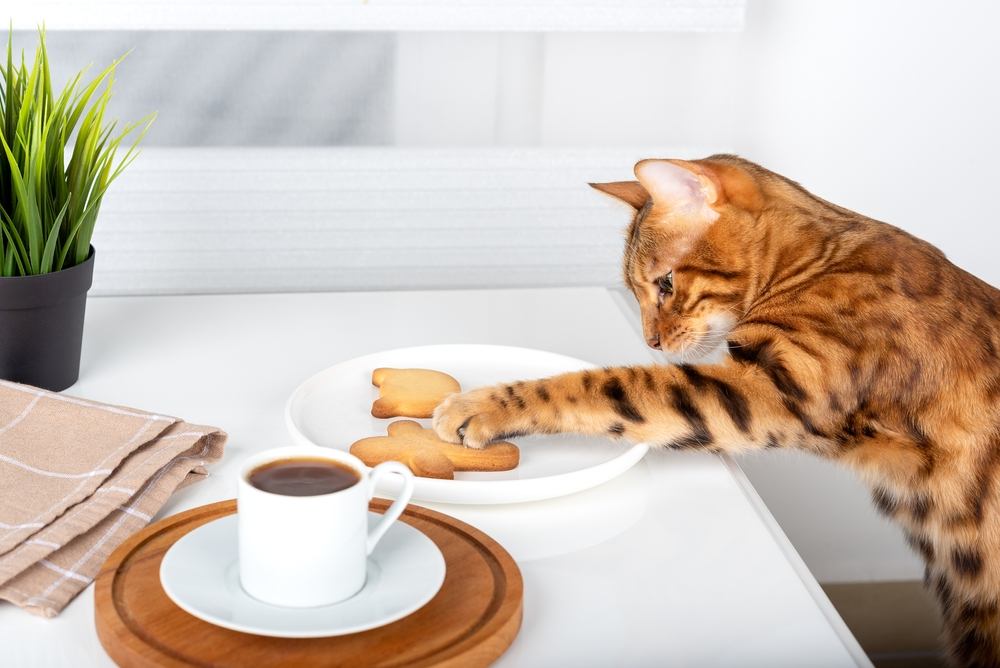
About one-third of cats are left-pawed, another third are right-pawed, and the final third use both paws equally.
You have probably never noticed that your cat does indeed have a dominant paw. A recent study showed that cats as a species have no overall dominant paw (unlike humans, the vast majority of whom are right-handed), but individual cats do have a preference for which paw they use in different situations.
This study showed that 73% of cats reached for food with a preferred paw, 70% of cats had a favored paw to put forward first when descending the stairs, and 66% of cats had a preferred paw for stepping into their litter box. What’s more, each cat mostly used the same preferred paw for each of these tasks.
Overall, it seems to be that paw preference is fairly equally split amongst cats, with approximately one-third of cats being left-pawed, one-third being right-pawed, and the remaining one-third having no preference (termed “ambilateral”).
It has also been found that there is a link between paw preference and gender. As a general rule, male cats are more likely to be left-pawed, whereas females are more likely to be right-pawed.
Also Read: 9 Things You Probably Didn’t Know About Polydactyl Cats
How Is Paw Preference Linked To Behavior?
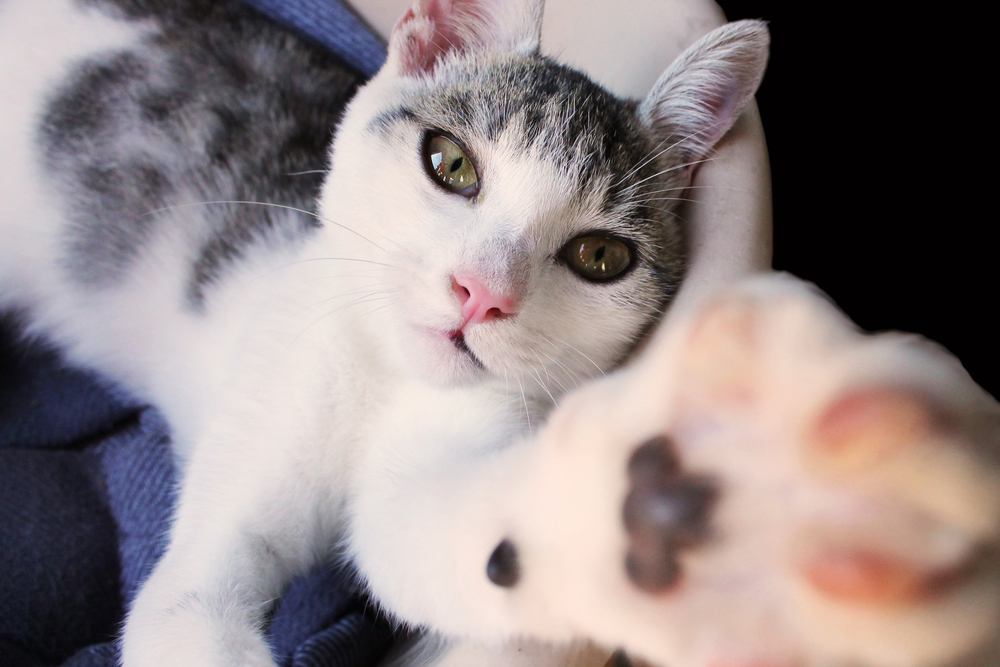
Right-pawed cats tend to be more confident and friendly while left-pawed cats might be more fearful.
The right side of the body is controlled by the left hemisphere of the brain and visa versa. A cat’s paw preference indicates which side of the brain is likely to be more active, and so in turn will determine which personality traits are likely to be strongest in that cat.
The left side of the brain is more heavily involved in logic, processing information, and positive emotions. The right hemisphere of the brain is more responsible for the fight-or-flight response and the processing of negative emotions.
This means that left-pawed cats will have a stronger tendency toward fearfulness and aggression than right-pawed cats. Cats with a dominant right paw are more likely to be playful and more confident and friendly. Of course, these are generalizations and each cat will have its own unique personality, sometimes regardless of its dominant paw.
Also Read: 8 Reasons Your Cat Is Pawing And How To Help
Strength Of Paw Preference
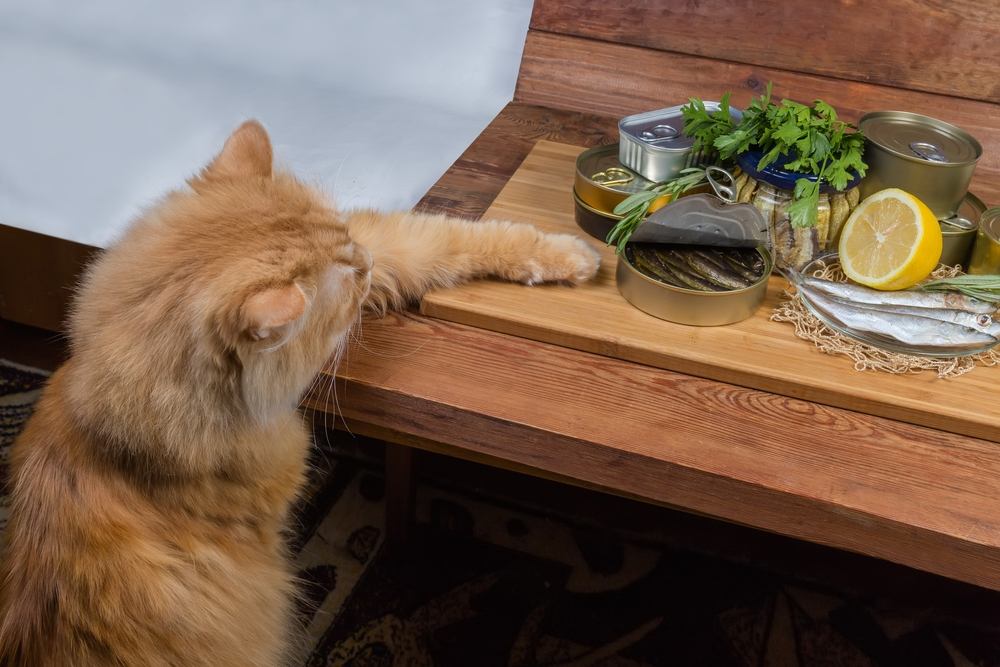
Paw preference might be mild or very strong depending on the cat.
How strongly your cat prefers one paw over the other, regardless of whether it’s the left or the right, is associated with your cat’s capabilities. Cats that have a strong preference for one paw over the other are more likely to be better at solving problems, have faster reaction times, and be more dexterous.
Ambilateral cats (cats that do not have a dominant paw) are more likely to suffer from anxiety and stress-related behaviors. They also have a stronger tendency toward aggression than left-pawed or right-pawed cats.
Also Read: Why Do Cats Knead Their Owners?
Left-Pawed Cats Vs. Left-Handed Humans
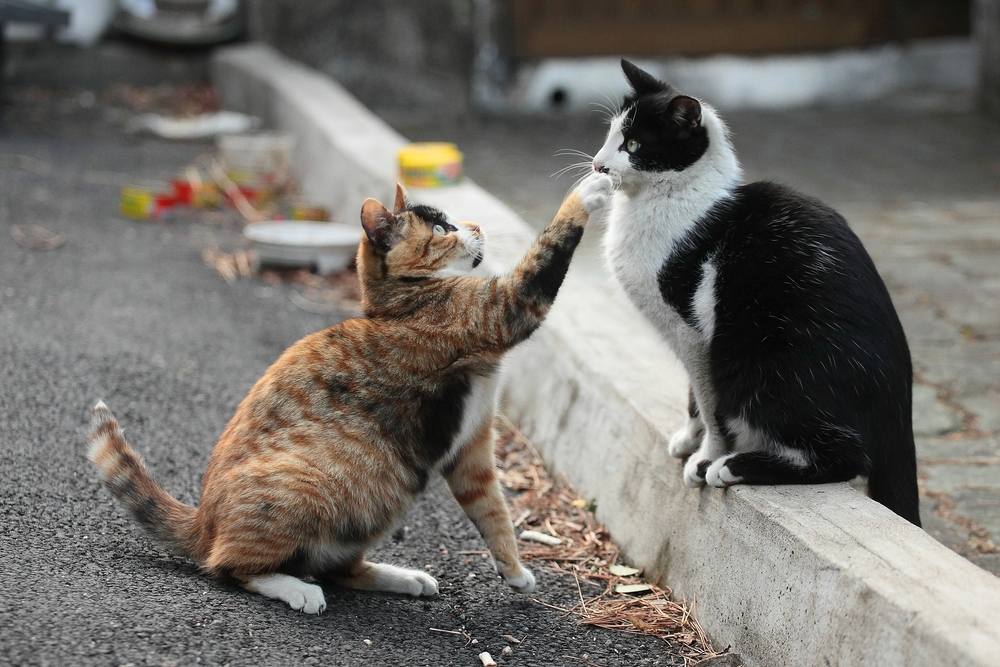
There might be more left-pawed cats than left-handed humans due to the differences in our species.
Research has demonstrated that left-paw preference in cats is three to four times higher than left-hand preference in humans. So why is this? Well, it could be to do with the fact that before cats were domesticated, they relied more heavily on the right side of their brain—the fight-or-flight part—to survive, particularly as they are solitary animals.
Remember, the right side of the brain controls the left side of the body, so this more active right side of the brain is more likely to result in a left-pawed cat.
Humans on the other hand are social mammals with complex social relationships, the basis for which is processed in the left side of the brain, hence the tendency for right-handedness in humans.
Also Read: 5 Ways To Build A Stronger Bond With Your Cat
How To Tell Whether Your Cat Is Left-Pawed Or Right-Pawed
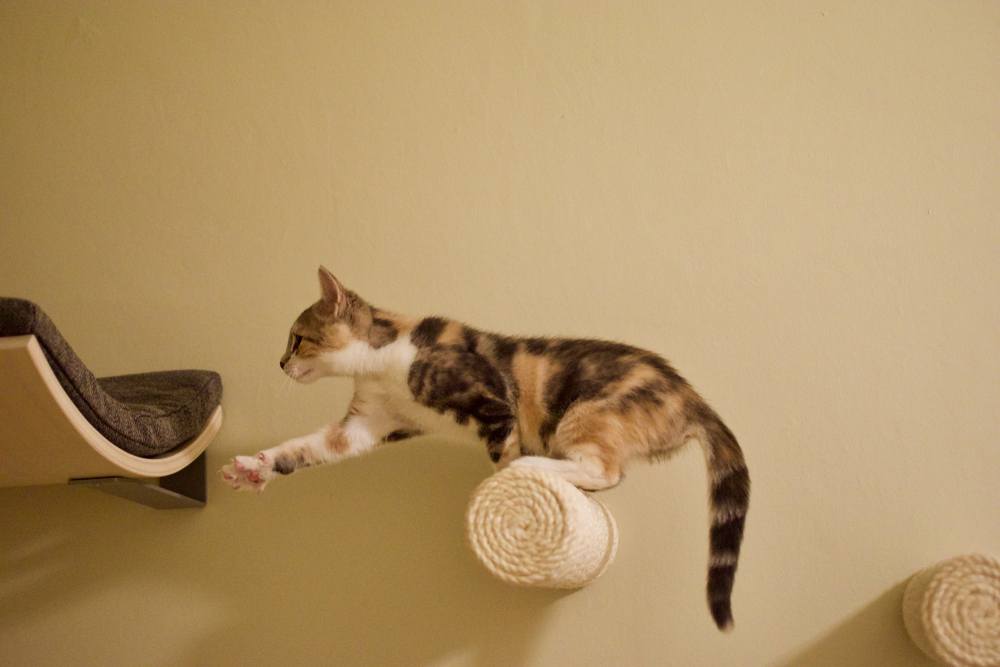
Observe your cat doing the same action many times to get an idea if they are right- or left-pawed.
There are many ways to tell whether your cat is a lefty or a righty. You can observe your cat as they go about their daily routine and watch closely to determine which paw they use first to step into the litter box, or which paw they use first as they begin their descent downstairs. If you want to set up a test for your cat, you can put some treats in a cup or box and watch to see which paw your cat uses to try and get them out.
Just watching your cat once or twice isn’t enough though, you need to observe them doing one of these activities at least 50 times to be able to determine whether or not they have a dominant paw, and if so, which one it is. It might take a while, but with a little patience, you should be able to work out whether you have a cat that is left-pawed or right-pawed.
Also Read: How High Can A Domestic Cat Actually Jump?
Most cats do indeed have a dominant paw, although there are some that are ambilateral and don’t appear to have a paw preference. Male cats are more likely to be left-pawed, whereas females are more likely to be right-pawed.
A cat’s paw preference is also linked to its personality traits, with left-pawed cats being more prone to fearfulness and stress, and right-pawed cats tending to be more confident and friendly. Try observing your cat’s behavior regularly over a few weeks to see whether or not they have a dominant paw.
Also Read: How To Safely Trim Cat Nails – A Step By Step Guide
-
McDowell L, Wells D, Hepper P. (2018). Lateralization of spontaneous behaviors in the domestic cat, Felis silvestris. Animal Behaviour. 2018;135:37-43.
-
Isparta S, Salgirli Demirbas Y, Bars Z (2020). The relationship between problem-solving ability and laterality in cats. Behavioural Brain Research. 2020;391:112691.

